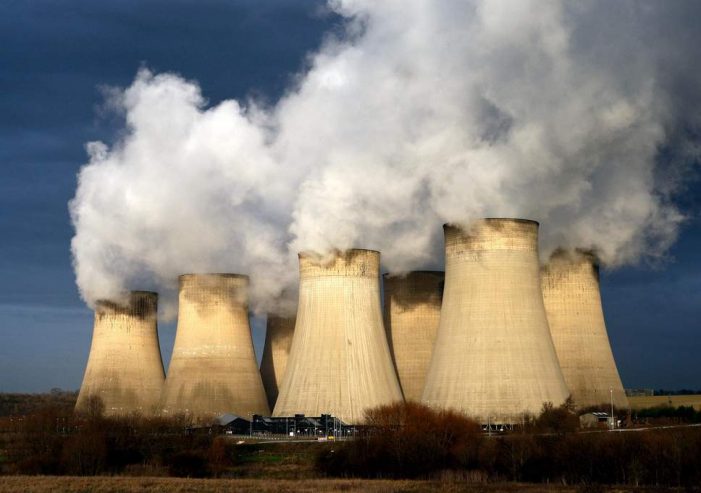India Post News Service & Agencies
India will soon have 12 more nuclear plants soon to improve the power situation and ensure there is a free flow of uninterrupted power supply for both industries and residential use, Secretary of the Department of Atomic Energy (DAE), K.N. Vyas, has said.
“Nuclear technology helps in betterment of lives through varied usages and is an irreplaceable source of clean, pollution-free energy,” Vyas, who is also the Atomic Energy Commission of India’s Chairman, said at the 11th International Forum AtomExpo 2019, sponsored by Rosatom State Atomic Energy Corporation, held in Sochi, Russia, recently.
He said the founder of the Indian nuclear programme, Homi J. Bhabha, had envisaged that nuclear technology is going to be “very essential” and not just in the power sector but for other societal uses intended for betterment of life.
“We believe that when it comes to clean energy, there is no substitute to nuclear energy as it is sustainable and without interruption, one can have clean energy,” a statement quoting Vyas’s remarks said.
Citing the record run of Kaiga Nuclear Power Station, he said a small unit of indigenously-developed 220-250MW reaction has completed 962 days of uninterrupted run at about 99.3 per cent capacity and the amount of electricity it has generated is “tremendous”.
Vyas said the first stage of India’s indigenous nuclear power programme has now attained maturity with 18 operating Pressurised Heavy Water Reactors (PHWRs).
The AtomExpo was held in Sochi with the the motto this year being ‘Nuclear for better life’, with over 3,600 participants from 74 countries in attendance, including new ones like Qatar, Bahrain and Nicaragua.
“Peaceful atom is associated with all aims and goals fo the UN Sustainable Development Program. The Forum became a space for discussing the latest technologies thus ensuring a base for the future of the planet,” said Rosatom State Corporation Director-General Alexey Likhachev.
In a message, Russian President Vladimir Putin lauded the AtomExpo in advancing the stature of the country in the field of nuclear technology.
In his address, Vyas said that the government of Prime Minister Narendra Modi has sanctioned 10 PHWRs in fleet mode, besides plans afoot for constructing two light water reactors.
Indian industry has gained a lot through the process, nuclear energy and instruments require a guided and systematic way of manufacturing and quality assurance which raises the standard of industry participating in the manufacturing of equipment, he added.
Nuclear technology is not only intended for generating power, but is also useful for doctors and scientists and huge improvement in technological innovations in the medical field has cancer patients undergoing radiotherapy feel better by up to 60 per cent.
Nuclear power in India delivers a total capacity of 6.7GW, contributing to just under 2 per cent of the country’s electricity supply. India’s nuclear plants are controlled by Nuclear Power Corporation of India (NPCIL), a state-owned corporation which was founded in 1987.
As of now, India has seven nuclear power plants – Kudankulam Nuclear Power Plant in Tamil Nadu, Tarapur Nuclear Reactor in Maharashtra, Rajasthan Atomic Power Plant at Rawatbhata in Rajasthan, Kaiga Atomic Power Plant in Karnataka, Kalapakkam Nuclear Power Plant in Tamil Nadu, Narora Nuclear Reactor in Uttar Pradesh and Kakarapar Atomic Power Plant in Gujarat.
Of these seven plants, Kudankulams the highest-capacity nuclear plant in India, with a total of 2,000MW currently installed with a further 2,000MW under construction.
Kudankulam is the only nuclear plant in India that uses pressurised water reactors (PWR) rather than boiling water reactors (BHWR) or PHWRs. The PWRs are based on Russian technology and were supplied by Atomstroyexport.
The Tarapur Nuclear Reactor in Maharashtra is the oldest nuclear facility in India, having commenced commercial operations in 1969.
The reactor is currently the second most powerful in India, with two BHWRs of 160MW and two PHWRs of 540MW forming a total of 1,400MW.
While the Rajasthan Atomic Power Plant has a total installed capacity of 1,180 MW, the Kaiga plant in Karnataka produces 880 MW of power.
Kalapakkam, Narora and Kakarapar have installed capacities of 235 MW, 440 MW and 440 MW respectively.
Kalapakkamhas as of nowtwo reactors, with two more reactors of 500MW and 600MW scheduled to be added at a later date.







